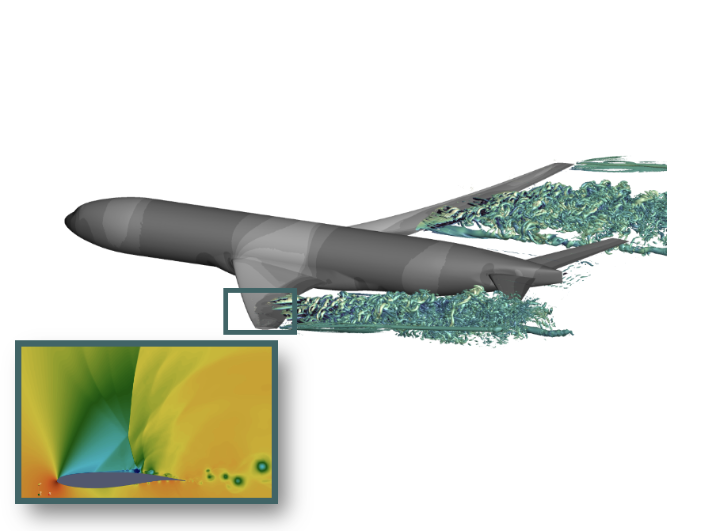SimTech's participating researcher Andrea Beck is one partner of eight European universities and research institutions involved in the European Center of Excellence for Exascale CFD (CEEC). They will develop key codes for computational fluid dynamics in preparation for the arrival of exascale supercomputing systems. Her new team is now completed and the research group has started its work.
The research focus of the Numerics Research Group lead by Andrea Becks is the development of high-precision numerical methods, their implementation and optimization for supercomputers as well as their application to interesting questions from research and industry. The group has developed the simulation code FLEXI, which has been identified as one of the leading codes in Europe and is therefore used in the CEEC. It was designed to simulate compressible flows that occur, for example, on commercial aircraft or wind turbines.
Andrea Beck and her research group now have the primary role of bringing in the FLEXI code in the CEEC project and providing the lighthouse case Shock – Boundary layer interaction and buffet on wings at the edge of the flight envelope. Transonic flows around an aircraft wing will be simulated for the first time with high resolution in order to understand shock-boundary layer interactions and buffet. Data-driven methods for turbulent flows developed in SimTech will also be used.
The research group of Andrea Beck will lead the work on Exascale light-house cases, which is at the core of this project. They will also play an important role in work on software and performance engineering. Furthermore, they contribute to the work on exascale algorithms and, finally, lead the work on developing and integrating machine learning -based submodels.
With the advent of powerful computers and new and ever more efficient numerical algorithms, complex systems like these flows can be simulated with increasing realism, bypassing the time and expense of experimentation. However, codes are not yet ready to run on these systems. Additionally, even at exascale, realistic flow simulations would run prohibitively long without tailoring granularity and accuracy to specific cases. CEEC’s ambition is to enable the use of exascale computers for key computational fluid dynamics (CFD) applications and demonstrate their capabilities through these key light-house cases.
The High-Performance Computing Center Stuttgart (HLRS) is also part of the CEEC. With its expertise in visualization and data management it leads the corresponding CEEC efforts in exascale techniques associated with visualisation and data management.
| Contact | Andrea Beck |
|---|



